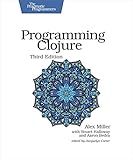Best Concurrency Programming Tools to Buy in December 2025

Concurrency in Go: Tools and Techniques for Developers



Parallel Programming And Concurrency C# 13 and .Net 9 : Definitive Guide



Delphi High Performance.: Master the art of concurrency, parallel programming, and memory management to build fast Delphi apps



Rust Programming: A Practical Guide to Fast, Efficient, and Safe Code with Ownership, Concurrency, and Web Programming (Rheinwerk Computing)



The Ultimate Guide to Clojure Concurrency: A comprehensive catalog of concurrency tools you can use to master shared state and rock your cores.



Effective Concurrency in Go: Develop, analyze, and troubleshoot high performance concurrent applications with ease



Delphi High Performance: Build fast Delphi applications using concurrency, parallel programming and memory management



Grokking Concurrency



Efficient C++ Multithreading: Modern Concurrency Optimization (Advanced C++ Programming Book 4)



Programming Clojure (The Pragmatic Programmers)


In Scala, Futures and Promises are powerful abstractions used for handling concurrent and asynchronous programming. They provide a convenient way to work with computations that may execute in parallel or return a result at a later time.
Futures represent the result of an asynchronous computation. They allow you to perform operations on the result as soon as it becomes available, without blocking the main thread. The Future API offers various methods to work with these results, such as map, flatMap, and onComplete.
To create a Future, you can use the Future.apply method or the future block. For example:
import scala.concurrent.Future import scala.concurrent.ExecutionContext.Implicits.global
val futureResult: Future[String] = Future { // Perform some long-running computation "Result" }
Promises, on the other hand, represent a write-once container for a value to be computed asynchronously. You can think of them as a way to complete a Future manually. By creating a Promise and its corresponding Future, you can control when and how the Future will be fulfilled.
To create a Promise, you can use the Promise.apply method. For example:
import scala.concurrent.Promise import scala.concurrent.ExecutionContext.Implicits.global
val promiseResult: Promise[String] = Promise[String]()
val futureResult: Future[String] = promiseResult.future
// Simulate an asynchronous computation global.execute(() => { Thread.sleep(1000) // Perform some work promiseResult.success("Result") })
Once a Promise is completed with a value using the success or failure methods, its corresponding Future will be completed and any registered callbacks will be executed.
You can also combine multiple Futures using methods like map, flatMap, sequence, and zip. These methods help you compose asynchronous computations and perform operations on the combined results.
It's important to note that working with Futures and Promises requires an execution context, which defines the thread pool used for executing the computations. In the examples above, scala.concurrent.ExecutionContext.Implicits.global is used, providing a global execution context with a default thread pool.
Overall, Scala's Futures and Promises play a crucial role in concurrent and asynchronous programming, making it easier to handle parallel computations and effortlessly work with results that may arrive at a later time.
What is the role of Future filter in Scala?
In Scala, the Future filter is a method provided by the Future API. It allows you to define a transformation or a condition on the value of a Future, and based on that, it either returns a new Future with the transformed value or a failed Future.
The syntax for using the filter method on a Future is as follows:
future.filter(predicate)
where future is the Future instance, and predicate is a function that takes the value of the Future as input and returns a Boolean indicating whether the filtering condition is satisfied or not.
The filter method evaluates the predicate function on the value of the Future when it becomes available. If the predicate returns true, it creates a new Future with the same value. If the predicate returns false, it fails the Future with a NoSuchElementException. It can be useful for selecting or excluding specific values from the Future based on a condition.
Here's an example to illustrate the usage of the filter method:
import scala.concurrent.Future import scala.concurrent.ExecutionContext.Implicits.global
val future: Future[Int] = Future.successful(42)
val filteredFuture = future.filter(_ > 50)
filteredFuture.onComplete { case Success(value) => println(value) case Failure(ex) => println("Filtered condition not satisfied") }
In this example, the future contains the value 42. The filter method is used to create a new Future that only includes values greater than 50. Since the value of the original Future doesn't satisfy the condition, the filteredFuture will fail with a NoSuchElementException, and the failure case will be printed.
What is the purpose of Futures and Promises in Scala?
The purpose of Futures and Promises in Scala is to simplify and enhance asynchronous programming.
A Future represents a value that may not yet be available but will be available at some point in the future. It allows you to perform computations in parallel, without blocking the main thread, by encapsulating the result of a computation that may not have completed yet. You can create a Future using a function that returns a value or by wrapping an existing value.
On the other hand, a Promise is an object that completes a Future with a value. It allows you to produce a value asynchronously and complete a Future with that value. You can think of a Promise as a writable, single-assignment container that completes a Future once.
Futures and Promises in Scala provide a way to handle concurrency and deal with non-blocking I/O operations. They provide a more readable and concise way of expressing concurrent operations than traditional callback-based approaches. Additionally, they handle error propagation and composition of asynchronous operations, making it easier to handle complex asynchronous workflows.
How to use Promises for asynchronous communication in Scala?
In Scala, you can use the scala.concurrent.Promise class to handle asynchronous communication and manage the result of asynchronous computations. The Promise class is part of the scala.concurrent package, so you need to import it to use it.
Here's a step-by-step guide on how to use Promises for asynchronous communication in Scala:
- Import the Promise class:
import scala.concurrent.Promise
- Create a Promise instance:
val promise = Promise[String]()
- Get the Future associated with the Promise:
val future = promise.future
- Start the asynchronous computation in a separate thread or using a non-blocking operation:
import scala.concurrent.ExecutionContext.Implicits.global
val computation = Future { // Perform async computation… "Async result" }
- When the computation is complete, fulfill the Promise with the result:
computation.onComplete { case Success(result) => promise.success(result) case Failure(ex) => promise.failure(ex) }
- Optionally, you can handle the result by registering callbacks on the Future:
future.onComplete { case Success(result) => println("Result: " + result) case Failure(ex) => println("Error: " + ex.getMessage) }
With the above steps, you have used Promises to handle asynchronous communication in Scala. The Promise represents a place-holder for a value that will be computed asynchronously, while the associated Future provides a read-only view of the result of the computation.
What is the difference between a Future and a Promise in Scala?
In Scala, both Future and Promise are used for asynchronous programming, but they have some differences:
- Representation: A Future is a read-only placeholder for a computation that will be completed in the future, while a Promise is a writable, single-assignment container that can be completed with a value or an exception.
- Ability to set value: With a Future, you cannot set its value manually; it is determined by the asynchronous computation. On the other hand, with a Promise, you can set its value manually using the success() or failure() methods.
- Composition: Futures can be composed and chained using combinators like map(), flatMap(), and others. Promises, being a writable container, are often used to create Futures. So, Promises are useful for scenarios where you need more fine-grained control over the completion of a Future.
- Error handling: Futures handle errors by applying transformations to the successful result, while Promises allow explicit handling of exceptions using the failure() method.
Overall, Futures represent the result of an asynchronous computation, while Promises provide a way to complete that computation manually.
What is the role of Future.firstCompletedOf in Scala?
The role of Future.firstCompletedOf in Scala is to create a new Future that completes when the first of the given Future instances completes.
It takes a sequence of Future instances as input and returns a new Future. The returned Future is completed with the same value (success or failure) as the first Future that completes. Any remaining Future instances are cancelled.
Here's an example usage:
import scala.concurrent._ import scala.concurrent.duration._
val future1 = Future { Thread.sleep(1000); 1 } val future2 = Future { Thread.sleep(2000); 2 } val future3 = Future { Thread.sleep(3000); 3 }
val firstCompleted = Future.firstCompletedOf(Seq(future1, future2, future3))
Await.result(firstCompleted, 4.seconds) // Waits for the first future to complete
//prints: 1
In this example, we have three Future instances representing some asynchronous computations. Future.firstCompletedOf is used to create a new Future that completes when the first of these three Future instances completes. The returned Future will be completed with the value from the first completed Future. The remaining Future instances will be cancelled.
